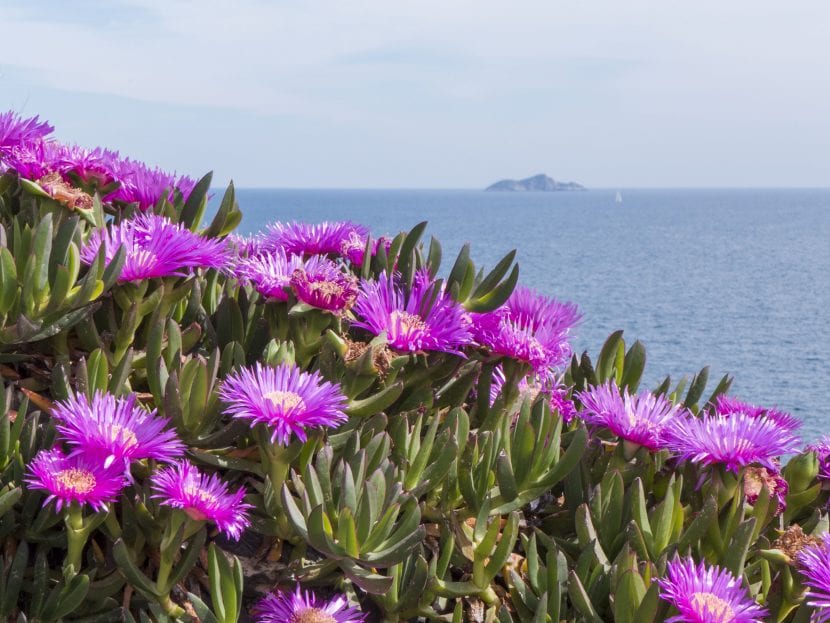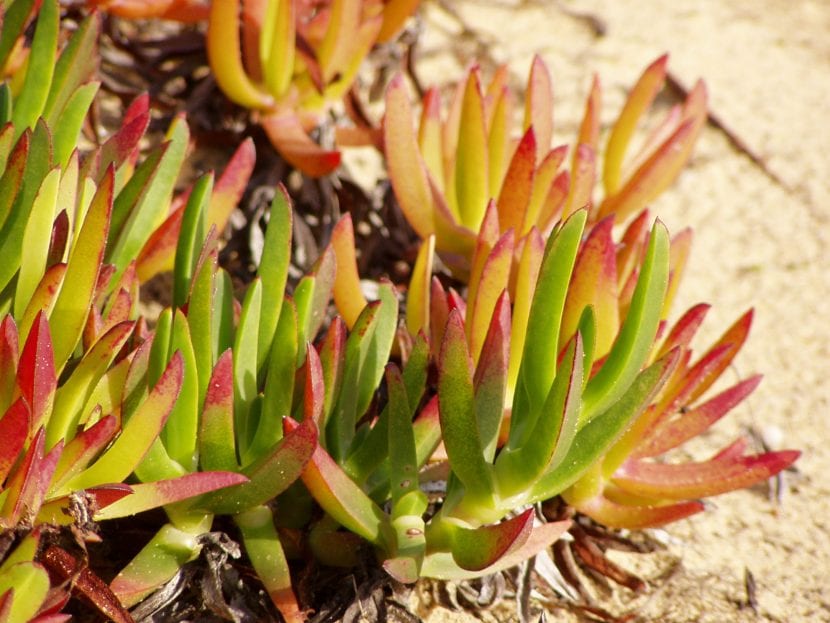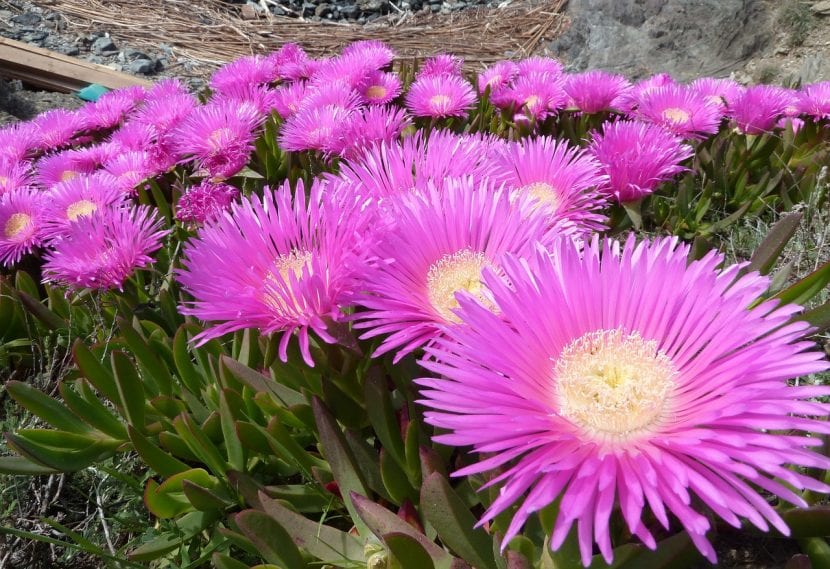
If you are lucky enough to live near the sea or a few kilometers from it, you will be able to have a unique garden, why? Because the plants that resist these conditions are incredible. Some species have real problems adapting to such an environment, with sandy soils and salt-laden air, but there are others that, on the contrary, are like a fish in water ... and never better said.
One of the best suited is the carpobrotus, a very fast growing succulent plant that produces beautiful flowers during the summer.
What are the characteristics of Carpobrotus?

Our protagonist is a non-cactus succulent plant mainly native to South Africa that it is characterized by creeping stems with fleshy leaves, up to five-six centimeters in length. These are normally green in color, but the tips, which are triangular, often turn reddish in the sun's rays.
During the summer it produces large, solitary and terminal flowers, that is, the flower stalk withers when the flower does as well. They can be white, yellow, or purple in color. The fruit is fleshy and contains obovoid seeds.
Its growth rate is very fast, so much so that if it is not controlled it can become a pest. In Spain the species carpobrotus edulis and Carpobrotus acinaciformis are included in the Spanish Catalog of Invasive Alien Species.
How do you take care of yourself?

It is a plant that practically takes care of itself. Of course, so that problems do not arise, it is very important that the following is taken into account:
- Location: outside, in full sun. It can also be indoors, but only if it is placed in a room where a lot of light comes from outside since it does not grow well in semi-shade.
- Soil or substrate: it is not demanding, but it grows better in those that have good drainage.
- Irrigation: if it is on land, it will be enough to water twice a week the first year, and nothing from the second. If, on the other hand, it is in a pot, it must be watered two-three times a week in summer, and every 5-6 days the rest of the year.
- Planting or transplanting time: in spring.
- Subscriber: if it is in the garden it will not be necessary. In pot, it is recommended to fertilize once a month from spring to late summer with a fertilizer for cacti and succulent plants, following the instructions specified on the package.
- Plagues and diseases: none important. You just have to be careful with snails and slugs. Here you have several remedies to keep them away.
- Multiplication: by seeds or leaf cuttings in spring-summer.
- Rusticity: supports weak frosts down to -6ºC.
So, if you don't have much experience in caring for plants, you will surely enjoy Carpobrotus 🙂.
The first photo reminded me of Cabrera seen from the south coast of Mallorca and the thousands of € (some millions perhaps together with oxalis opuntia and nicotiana) that the administration has spent on the eradication of this beautiful invasive plant. So invasive that seagulls quickly carry it away from gardens where they quickly take root and compete with local flora. In Cabrera and what is now the natural park of Es Trenc in Mallorca it was a major problem. I believe that its commercialization is prohibited in Spain. So watch out for this pretty and rustic plant.
What is beautiful is also invasive. Compete and win the autochthonous plants of the Mediterranean.
I encourage you to uproot the ones you can.